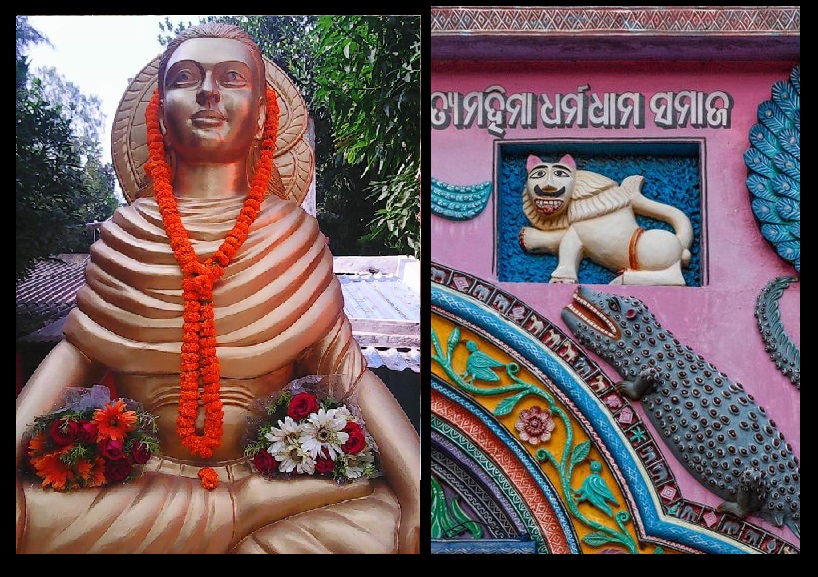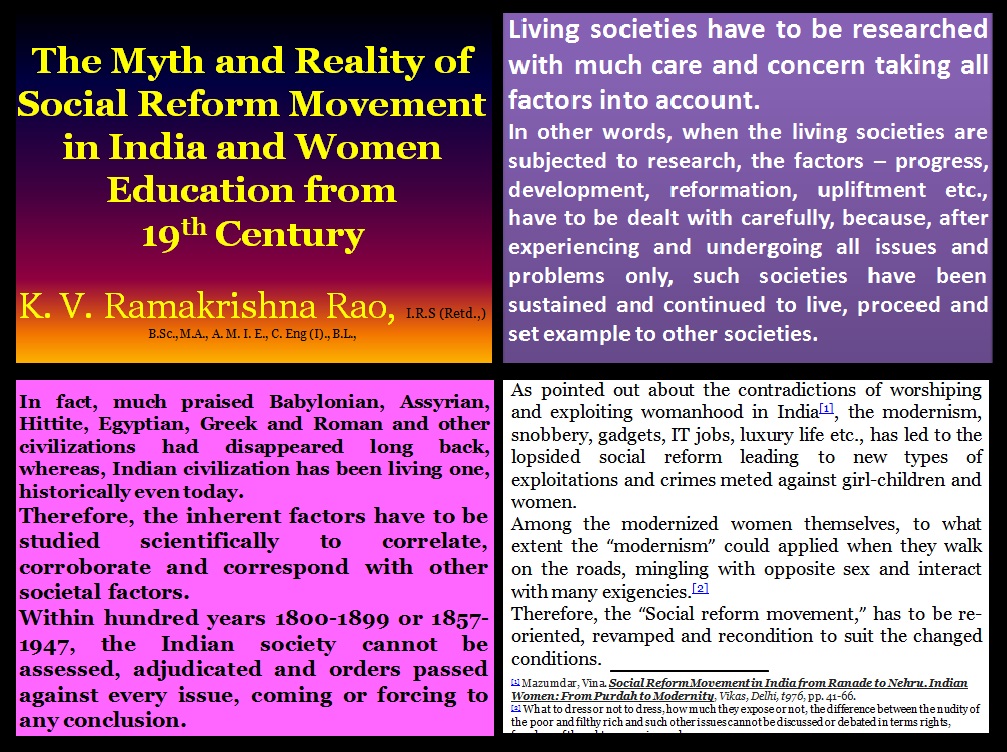Indian antiques in the London Museum – to be returned to India or not? Is it ASI’s folly or colonial bungling?
The CAG, ASI, DAP and the Parliament: During the decade, there have been many attempts made for the return of Indian antique objects and in fact, they have been returned with official, friendly and diplomatic efforts. Therefore, such narratives and discourses increased and the claims have gone to the extent of asking the “Kohinoor” back. Meanwhile, there have been the Audit reports of the Comptroller and Auditor General every year about the functioning of the Archaeological Survey of India (ASI) and related divisions. Definitely, the findings and objections of the auditors have been interesting, and informative and they amount to some sort of research paper. Their methodology and procedure followed at every level could be noted to be appreciated. How they raise the objections from the field level to the Parliament can be noted carefully. Definitely, the auditors have read the related Acts and Rules, history, archaeology and related subjects and that is why they could raise such informative objections.
700 pieces of the Aural Stein Collection not returned to India: About 700 pieces belonging to the Aural Stein Collection of Central Asian antiquities owned by the Archeological Survey of India (ASI) were lent to the Victoria and Albert Museum in London about 100 years ago[1]. The artefacts are still lying with the borrower in the United Kingdom and the ASI has not made a single effort to get hold of the noted assortment dating between 200 BCE and 1200 CE despite the issue being flagged by the CAG in its two previous audit reports in 2013 and 2022[2]. Non-action of the ASI has apparently upset the Committee of Parliamentarians[3]. Taking note of the position of the national watchdog of national monuments, the 31-member parliamentary standing committee on transport, tourism and culture has recently asked the ASI to establish contact with the London Museum and set off the process of repatriating the collection[4].
How tones and tones of Indian antiquities could have gone out of India?: Any Indian would be surprised and astonished also to find out how the tones and tones of Indian monuments, sculptures, parts of temples and even temples in CKD conditions could have been smuggled out of India and displayed there at thousands of museums t the EU, USA and other countries. Perhaps such items could have been more that are displayed in the Indian museum. How it could have happened, definitely, the European Company directors, officers, traders and others have taken such items out of India, whenever, they left India for vacation, function or official sojourn. Perhaps, before the introduction of the acts and rules, there was no legislative control over their movement in India. Anyway, ships loaded with such articles went out of India. Even for exhibition, borrowal, lending and other exigencies, Indian artefacts were given away, but not received back. The “committees” formed and all have been the politicians and they would have had a trip of visiting London on this account, but, slowly forgotten and silently suppressed.
CAG pointed out in audit several times: Auriel Stein, a British-Hungarian archaeologist, collected a large number of artefacts — Chinese, Tibetan and Tangut manuscripts, paintings, Buddhist sculptures, textile fragments, and ceramic objects during his archaeological expeditions to Central Asia at the beginning of the 20th century. A part of Stein’s collection consisting of nearly 600 textile fragments and over 70 ceramic and Buddhist objects were loaned to the museum by the Indian Government through ASI between 1923 and 1933. The Committee in its recent report titled “Heritage Theft – the illegal trade in Indian antiquities and the challenges of retrieving and safeguarding our tangible cultural heritage—has also expressed dissatisfaction over the response of the Culture ministry.
The routine action of the Committee: The ministry stated that ‘there was no record or document in the National Museum regarding the loan of the 700 objects of the Aural Stein collection to the museum’ since it was taken away before Independence. The ministry additionally submitted the Temporary Export Permit (TEP) rule didn’t for the same reason. “The Committee is well aware that since the objects of the collection were taken out of the country prior to independence, the TEP did not apply to them…as per records these antiquities were still ‘owned by the ASI’ and were on loan but there was no evidence of any efforts of ASI to retrieve them…It is noted that the ASI has not even taken the basic steps to try and ascertain the background in which these objects were loaned to the museum and make efforts for their retrieval,” read the report. TEP authorises the Central Government of any authority or agency authorised by the Government to temporarily export any antiquity or art treasure for a certain period.
CAG objections and settlements: The Committee highlighted in its report that the website of the Museum in London acknowledges that the antiquities are ‘on loan from the Government of India’. The Panel has further recommended that the ministry and ASI make efforts to find out other cultural objects loaned to foreign museums or collections before the independence or 1972 and initiate action for their retrieval. After all, the “committee” comprises politicians and they do such rituals to “make efforts,” and ASI would submit a report of such “efforts made,” by writing letters, sending reminders and if possible, a visit to the “London museum” with government expenses. But the condition and position would not change. The CAG may convert into DAP and they would be discussed in the parliament. Mostly, these are discussed and settled within the respective ministries.
In 2019, a British barrister pointed out that the London Museum has the world’s largest receiver of stolen property: The British Museum has been likened to a criminal operation by one of Britain’s most famed barristers, who called the London institution the “world’s largest receiver of stolen property”. Geoffrey Robertson QC, a human rights barrister and author, criticised the landmark for showcasing objects taken from “subjugated peoples” by “conquerors or colonial masters”. Robertson made the blistering comments in his new book, Who Owns History? Elgin’s Loot and the Case for Returning Plundered Treasure, which was released today[5]. “The trustees of the British Museum have become the world’s largest receivers of stolen property, and the great majority of their loot is not even on public display,” he wrote, according to The Guardian[6].
In 2010 Britain rejected the Indian claim and demand of returning antiquities: Britain has rejected Archeological Survey of India’s demand for the return of artifacts that were carted away from India, mostly illegally, during British colonial rule[7]. The British foreign office said domestic laws prevented museums from removing items from their collection[8].‘‘The British Museum Act 1963 prevents our national museums from removing items from their collections, with the exception of human remains and objects lost during the Nazi era, and government has no plans to change the law,’’ a spokesperson of the Foreign & Commonwealth Office said. The spokesperson said people felt strongly about the restitution debate and that museum trustees take decisions relating to the items vested in their care and politicians don’t interfere. ‘‘It’s a long-established principle in the UK, supported by successive governments.”
Reality, fact and narratives: Like the British writer, nowadays, in India also, several writers have come up with books, by compiling all data gathered from the government documents and newspapers, but, in reality, nothing happens. India has been a huge country with 130-140 crores population with varied interests. Though, most of them have been Indian conscious, some 1, 2, 3 or 4% people of groups have been manipulating the processes of many happenings. Days by day, morality comes down and people think that they could get what they want through power, money, politics and such other factors. Thus, disciplined, controlled and faithful continue to follow their path, do their duties and continue their lives. With them only, Indian lives forever. Of course, there have been undisciplined, uncontrolled and unfaithful groups, they create problems and carry out their activities with their negative powers, destructive forces and harmful tendencies. Thus, India carries on her journey to the future.
K. V. Ramakrishna Rao
13-08-2023.
[1] Indian Express, About 700 ASI antiquities lent to London museum a century ago yet to return, Published: 07th August 2023 09:08 AM | Last Updated: 07th August 2023 03:42 PM.
[2] https://www.newindianexpress.com/nation/2023/aug/07/about-700-asi-antiquities-lent-to-london-museum-a-century-ago-yet-to-return-2602787.html – :~:text=New%20Indian%20Express-,About%20700%20ASI%20antiquities%20lent%20to%20London%20museum%20a%20century,hold%20of%20the%20noted%20assortment.
[3] MSN, About 700 ASI antiquities lent to London museum a century ago yet to return, Published: 07th August 2023 09:08 AM | Last Updated: 07th August 2023 03:42 PM.
[4] https://www.msn.com/en-us/news/world/about-700-asi-antiquities-lent-to-london-museum-a-century-ago-yet-to-return/ar-AA1eSM5k
[5] The National, British Museum is the world’s largest receiver of stolen property,’ claims top barrister, Nov 05, 2019
[6] https://www.thenationalnews.com/arts/british-museum-is-the-world-s-largest-receiver-of-stolen-property-claims-top-barrister-1.933622
[7] Times of India, ‘Britain rejects ASI demand for artifacts, Ashis Ray / TNN / Jun 4, 2010, 02:12 IST.
[8] https://timesofindia.indiatimes.com/india/britain-rejects-asi-demand-for-artifacts/articleshow/6008374.cms
Filed under: agnostic, ammonite, ammonites, antique, antiquity, archaeological remains, archaeological sites, archaeological survey of India, archaeology, artefact, artifact, ASI, Asiatic Society, audit, audit objection, bharat, bias, body, book, Brahma, Brahmi script, brahmin, broken parts, broken pillar, brown, bund, CAG, choice, colonial, Colonialist discourse, colony, columnist, commerce, common era, Communist Historian, compassion, comptroller and auditor general, conduct, conference, conservation, constitution, control, controversy, coolie, correcting, cosmology, course, crises, current era, curriculum, cutting, cycle, dadhyanc, daily, daispora, gnostic, granite, ground water, health, idol-lifting, idol-smuggling, idol-theft, india, Indian Mathematical Society, Indian National Science Academy, indian ocean, trade, tradition, UNESCO Heritage, update, V.J.A. Flynn, VJA Flynn, woman, worker, writer, young | Tagged: accountant, antique, antiquity, art, artefact, artifact, ASI, audit, audit objection, british, building, CAG, colonial, colony, committee, comptroller and auditor general, dap, doll, english, figure, london, monument, museum, old, reply, sculpture | Leave a comment »



































